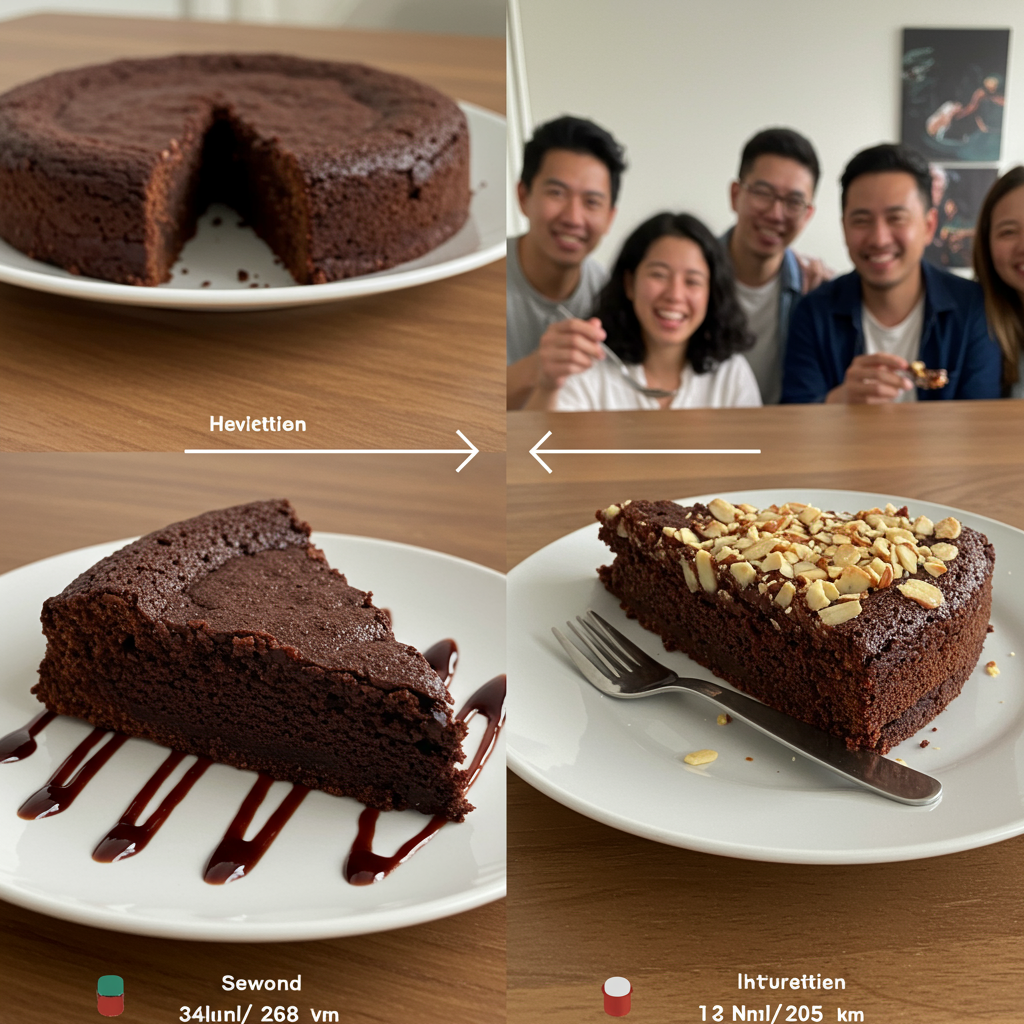Sweet Freedom: Enjoying Desserts While Managing Diabetes
In a world where sugar seems to lurk in every corner of our food system, those of us concerned about blood sugar balance often feel we must completely abandon the joy of desserts. But what if I told you that you could still indulge in delicious treats without derailing your metabolic health? Today, I want to explore how to navigate the sweet side of life while keeping your blood sugar—and health—in check.
Understanding Why Traditional Desserts Are Problematic
Traditional desserts pose a significant challenge for anyone concerned about blood sugar regulation. Most conventional sweet treats are essentially blood sugar bombs, containing refined sugars, processed flours, and industrial seed oils that can trigger rapid glucose spikes followed by insulin surges.
These blood sugar roller coasters don't just affect people with diagnosed diabetes. They contribute to insulin resistance over time, which underlies not only type 2 diabetes but also heart disease, dementia, and many other chronic conditions. The average American consumes about 152 pounds of sugar per year—a staggering amount that our bodies simply weren't designed to handle.
The problem extends beyond just sugar content. Most commercial desserts contain:
- Refined white flour that breaks down quickly into glucose
- Artificial flavors and preservatives that may disrupt gut health
- Trans fats and inflammatory oils that compromise cellular function
- Hidden sugars with deceptive names like "evaporated cane juice" or "rice syrup"
But rather than resign ourselves to a life without dessert, let's explore a different approach.

The Functional Medicine Approach to Desserts
The key to enjoying desserts while managing blood sugar isn't about deprivation—it's about transformation. By understanding how different ingredients affect your metabolism, you can recreate your favorite treats in ways that support rather than sabotage your health.
Here are the principles I follow:
-
Focus on healthy fats: Unlike carbohydrates, fats don't trigger significant insulin responses. Incorporating healthy fats like coconut oil, grass-fed butter, or avocado into desserts provides satisfaction without the blood sugar spike.
-
Embrace fiber-rich ingredients: Fiber slows down sugar absorption. Using almond flour, coconut flour, chia seeds, or flaxseeds creates desserts that don't cause rapid glucose elevations.
-
Choose natural sweeteners wisely: Small amounts of monk fruit, stevia, allulose, or even whole fruit can provide sweetness without the metabolic consequences of refined sugar.
-
Add blood sugar balancing spices: Cinnamon, nutmeg, and cardamom not only add complexity to desserts but can actually help regulate glucose metabolism.
-
Incorporate protein: Adding protein sources like nuts, seeds, or even collagen peptides to desserts helps blunt the glycemic response.
Diabetes-Friendly Dessert Makeovers
Let's look at how we can transform classic desserts into blood sugar-friendly versions:
Ice Cream → Coconut Milk "Nice Cream"
Blend frozen berries with full-fat coconut milk, a touch of vanilla extract, and monk fruit sweetener. The healthy fats slow sugar absorption from the berries, while the absence of added sugar keeps glucose impact minimal.
Chocolate Cake → Avocado Chocolate Mousse
Blend ripe avocados with raw cacao powder, a small amount of allulose, and vanilla. The healthy fats from avocado create a creamy texture while providing nutrients that support insulin sensitivity.
Apple Pie → Baked Apples with Cinnamon
Core apples and stuff with a mixture of chopped nuts, cinnamon, and a touch of monk fruit sweetener. Bake until tender. The fiber from the whole apple combined with cinnamon (which has been shown to improve insulin sensitivity) makes this a metabolically friendly treat.
Cookies → Almond Flour Cookies
Replace wheat flour with almond flour, swap sugar for monk fruit, and add dark chocolate chunks (85% or higher). These cookies provide protein and healthy fats while minimizing carbohydrate impact.
Remember, the goal isn't to make desserts a daily staple. Even these healthier versions should be occasional pleasures, not dietary foundations. But knowing you have options that won't derail your health can make the journey toward metabolic wellness feel less restrictive.

The Mindful Approach to Sweet Treats
Beyond ingredients, how we consume desserts matters tremendously. Here are my suggestions for a mindful approach:
-
Eat dessert after protein and fiber: Having dessert after a nutrient-dense meal that includes protein and fiber will slow the absorption of any sugars.
-
Take a short walk after indulging: Even 10 minutes of movement after a sweet treat can help your muscles take up glucose from your bloodstream.
-
Practice portion awareness: Savor small amounts completely rather than mindlessly consuming large portions.
-
Create meaningful dessert moments: Reserve desserts for special occasions where you can truly enjoy them, rather than making them an everyday habit.
The path to health isn't about perfection or complete elimination of life's pleasures. It's about making informed choices that allow you to enjoy food while supporting your body's natural healing capabilities. With these strategies, you can have your cake (occasionally, and reimagined) and eat it too—all while keeping your blood sugar balanced and your health on track.

References:
Ludwig DS, Ebbeling CB. The Carbohydrate-Insulin Model of Obesity: Beyond "Calories In, Calories Out". JAMA Intern Med. 2018;178(8):1098–1103.
Challa HJ, Bandlamudi M, Uppaluri KR. Paleolithic Diet. [Updated 2023 Jul 24]. In: StatPearls [Internet]. Treasure Island (FL): StatPearls Publishing; 2023 Jan.






